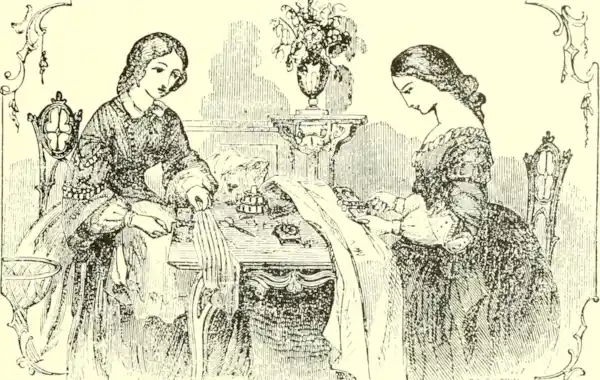09 March 2022
|
Long, long hours and low wages were the lot of our ancestors who plied their needles. Adele Emm takes a look at their lives and working conditions in Victorian times.
A quick definition of the jobs
Tailors measured up male customers for trousers, suits, frock coats, outdoor coats etc plus bespoke women’s mantles (outside-wear somewhat similar to thick shawls) and costumes (suits for women.)
Tailoresses mainly produced men’s trousers, jackets and shirts (when she called herself a shirtmaker.) It’s unlikely she measured up male clients.
Dressmakers designed dresses, measured up female customers, and cut the cloth.
Want more family history advice direct to your inbox?
Sign up to the Family Tree newsletter! It's free and packed with information and inspiration to take your research further.
Seamstresses, often synonymous with dressmakers, sewed together pieces of ready cut cloth to make-up the clothing.
Needlewoman. A needlewoman was just that. It’s likely she took in basic needlework and may not have completed an apprenticeship.
Remember, all girls were taught to sew, initially by hand and after the 1860s if they had the wherewithal, by machine. Adept at hemming, basic repairs and adjustments, under the mantra of waste-not want-not, hand-me-downs were routine.
Henry Mayhew's commentary on the plight of needleworkers
Henry Mayhew (1812-1887), social commentator and co-founder of Punch, embraced the battle-cry on behalf of needleworkers. Friedrich Engels (1820-1895) in Conditions of the Working Class in England (initially published 1845 in German) also excoriated conditions worked by tailors and dressmakers especially in ‘slop houses.’
Also known as slopshops, these sold ready-to-wear clothing bought by those too poor for made-to-measure. In a letter dated 6th November 1849, Mayhew wrote of ‘a small back room, about eight feet square, we found no fewer than seven workmen, with their coats and shoes off, seated cross-legged on the floor, busy stitching the different parts of different garments. The floor was strewn with sleeve-boards, irons, and snips of various coloured cloths.’ Two girls (tailoresses) beavered in the same room also supplying clothing for slopshops.
Working conditions & wages
The quintessential tailor’s pose was perched cross-legged on a table or counter for maximum light and to keep cloth clean. Because of long hours of close stitching, a common complaint was poor eyesight and blindness.
Paid piece-work, as explained to Mayhew, one man required two-and-a-half to three days working 6am until 7pm to make one dress or frock coat. Depending on the employer, he received 5 shillings and 6 pence (5/6) to 6 shillings and 9 pence (6/9). Poor quality work paid less.
But his master also deducted 4/- a week for tea or coffee and bed (two or three people to each one). Like Mrs Biddell, the cost of trimmings was also deducted. One workman expected 13/- for a 96-hour working week.
Putting this into context, in 1795, frustrated by frequent journeyman tailors’ strikes, the government set a journeyman’s weekly wage at 29/- (£1 9s = 4/6 a day.) Using Henry Mayhew’s evidence, an 1849 slopshop tailor earned a third of that.
By the 1850s, such workrooms had been nicknamed sweatshops and it wasn’t only men who slaved here. Many dressmakers, seamstresses and milliners were subjected to similar conditions.
Text extracted from an in-depth article on tailors, dressmakers and seamstresses in the April 2022 issue of Family Tree magazine. Get your copy here.
About the author
Genealogist and social historian Adèle Emm, is author of My Ancestor Worked in Textile Mills, Tracing Your Female Ancestors and Tracing Your Trade and Craftsman Ancestors. Visit Adèle’s website and read her blog.








